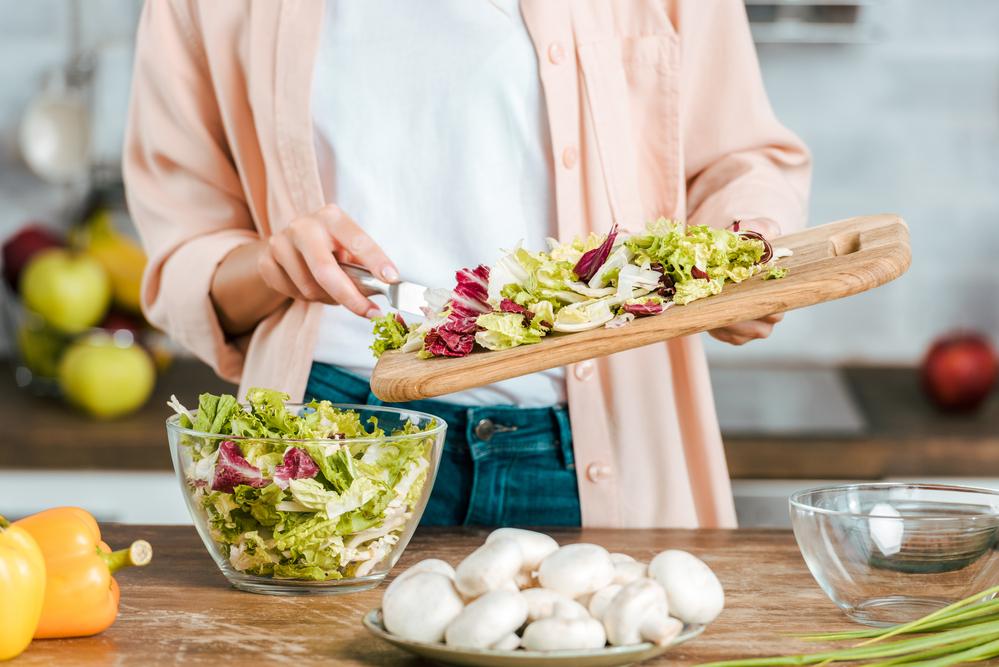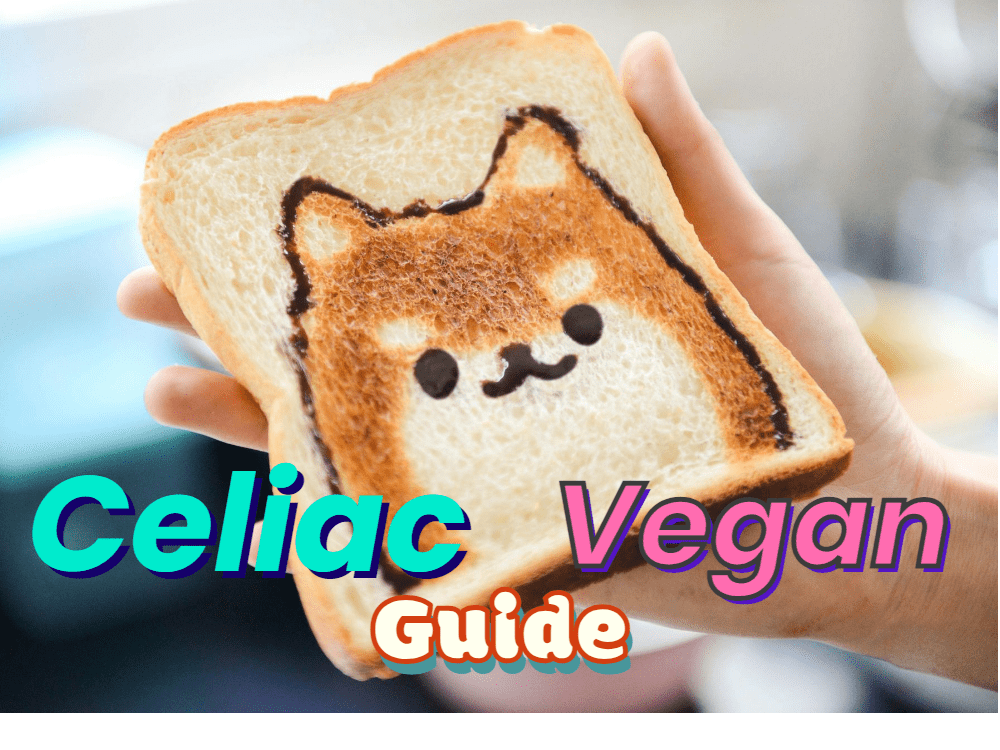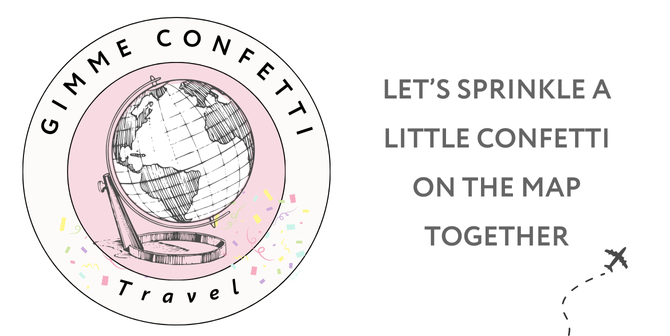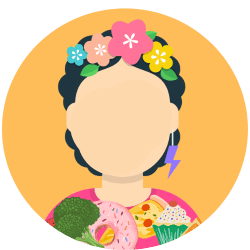As a vegan I’ve always wondered about the food requirements of celiac disease. I admit- at the beginning I didn’t really understand much. I would pop in a vegan bakery and not really understand what the gluten-free symbols meant. Luckily, I’ve learnt a lot along the way. Here is a full guide on celiac disease. I will break down is gluten-free vegan and vice versa. As well as foods that are both vegan and gluten-free. Plus, simple tips for how to navigate being a celiac vegan.
Celiac Vegan Guide:
What is Celiac Disease?
Essentially Celiac Disease is a condition triggered by consuming gluten. Gluten, a protein in wheat, barley and rye can cause issues in the system for those with Celiac Disease. Following a diet is vital for those with celiac disease to manage symptoms and support intestinal healing.
The Vegan Lifestyle

Veganism extends beyond food choices. It’s a belief system that aims to avoid using animal products in every aspect of life. A vegan diet mainly makes up fruits, vegetables, grains and legumes offering health benefits and ethical considerations. The challenge arises when a celiac vegan wants to align with this vegan philosophy while avoiding gluten containing foods.
Celiac= Must Eat Gluten-Free
Due to their intolerance for gluten (found in wheat, barley, rye and by-products), individuals with celiac disease need to eat GLUTEN-FREE.
Is Gluten Free Vegan?
Celiac disease is a health condition where the body reacts negatively to gluten, in wheat, barley and rye. To manage celiac disease individuals need to avoid foods containing gluten. Gluten free products suitable for those with disease can be either vegan or non vegan. Gluten is a protein found in wheat, barley, rye, and their derivatives, and avoiding gluten is essential for those with celiac disease. Veganism, on the other hand, excludes all animal products.
Veganism is a lifestyle and choice. Whereas people with celiac disease suffer from a disease where they don’t have a choice that their bodies negatively react to gluten. So No, gluten-free is not necessarily vegan. This is because there can be gluten in some vegan food.
Are There Gluten Foods That’re Not Vegan?
The answer is yes.
Gluten-Free, Non-Vegan Foods:
Gluten-free bread may contain eggs or dairy (eggs and dairy are not vegan).
Gluten-free pasta might contain eggs (eggs are not vegan).
Can you be Vegan with Celiac Disease?
Absolutely. You can definitely be both vegan and have celiac disease (eat gluten-free). You just have to avoid animal products and gluten.
To stick to a vegan and gluten-free diet makes sure to check food labels and opt for products labeled as both vegan friendly and free of gluten.

You can also focus on natural plant based foods. These include fruits, vegetables, legumes, nuts, seeds as grains like rice, quinoa and oats that are certified gluten free.
Although it may require attention when making food choices there are plenty of options to sustain a balanced diet rich, in nutrients that aligns with both a vegan lifestyle and the need to avoid gluten as a celiac vegan.
Important: I would seek guidance from a healthcare provider or a nutrition expert to make sure the vegan diet is the best option for you and that you can meet your body’s requirements while being a celiac vegan.
What Foods are BOTH Vegan and Gluten-Free?

Some examples of Both Vegan and Gluten- Free Foods:
1. Fruits and Vegetables:
- Apples
- Bananas
- Berries
- Broccoli
- Spinach
- Carrots
- Kale
2. Legumes and Pulses:
- Lentils
- Chickpeas
- Black beans
- Kidney beans
- Peas
3. Whole Grains:
- Quinoa
- Rice (brown, white)
- Buckwheat
- Millet
4. Nuts and Seeds:
- Almonds
- Walnuts
- Chia seeds
- Flaxseeds
- Sunflower seeds
5. Alternative Flours:
- Almond flour
- Coconut flour
- Rice flour
6. Processed Vegan/Gluten-Free Products:
- Gluten-free and vegan bread
- Vegan gluten-free pasta
- Vegan and gluten-free crackers
- Plant-based milk alternatives (e.g., almond milk, coconut milk)
Can Celiacs Eat Dairy?
People diagnosed with celiac disease do not necessarily have to eliminate dairy from their diet because they don’t need to avoid dairy but gluten (found in wheat, barley and rye). However some individuals with celiac disease might also experience intolerance, which is the body’s inability to digest lactose a sugar found in dairy products.
It’s crucial to differentiate between disease and lactose intolerance. Celiac disease triggers a reaction to gluten while lactose intolerance relates to difficulties in digesting lactose. If someone with disease is also intolerant to lactose they may have to restrict or refrain from consuming dairy products or opt for lactose free alternatives.
If there are no issues with lactose intolerance, individuals with celiac disease can generally include dairy products in their diet.
Tips for Being a Celiac Vegan
1. Focus on Whole Foods:
Focus on eating whole foods like such as fruits, vegetables, legumes, nuts, seeds, and gluten-free grains like rice, quinoa, and millet.
2. Read Labels Thoroughly:
Be diligent about reading food labels to identify gluten-containing ingredients. Look for products labeled explicitly as “gluten-free” and “vegan.”
3. Gluten-Free Grains:
Explore a variety of gluten-free grains, including rice, quinoa, amaranth, buckwheat, and millet, to diversify your diet.
4. Use Gluten-Free Flours:
When baking, opt for gluten-free flours such as almond flour, coconut flour, chickpea flour, or a gluten-free flour blend.
5. Check Vegan Products for Gluten:
Some processed vegan products may contain gluten, so always check labels for hidden sources of wheat, barley, or rye.
6. Be Mindful of Cross-Contamination:
Avoid cross-contamination by using separate cooking utensils, pots, and pans when preparing gluten-free meals.
7. Communicate Dietary Needs:
When dining out, communicate your dietary needs clearly to restaurant staff, and ask about gluten-free and vegan options.
8. Explore International Cuisines:
Many international cuisines, such as Asian and Mexican, offer naturally gluten-free and vegan dishes.
9. Plan Ahead:
Plan your meals and snacks in advance, especially when traveling or attending social events, to ensure you have safe and satisfying options.
10. Supplement Wisely:
Ensure you’re getting essential nutrients by considering supplements, especially if your diet may be lacking in certain vitamins or minerals.
11. Connect with Supportive Communities:
Join online communities or local groups that focus on both veganism and gluten-free living to share tips, recipes, and support.
For me, I find vegan can be pretty challenging sometimes, especially when it comes to social settings and eating out.
What are some of the biggest challenges you have faced as a Celiac Vegan? Let me know in the comments.
Found this vegan celiac guide helpful? Pin it now and save it for later.

